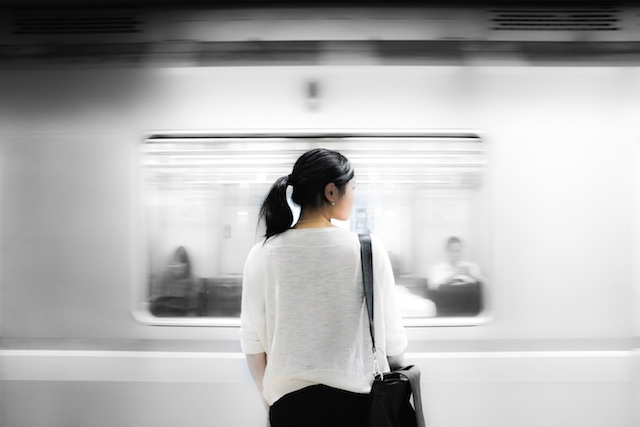Like many people, I’ve been trying to carve out new ways of cultivating mindfulness in my daily routine. When we meditate or practice other mindfulness techniques, we are trying to develop the ability to be present throughout the whole day. For those of us who haven’t dedicated a significant portion of our lives to meditation practice, this can seem like a big ambition. But the good news is that the benefits start early, and we can begin with the small things—I’ve been mindfully walking, face-washing and cooking, for example, as well as doing daily writing exercises inspired by Five Minutes to a Mindful You.
By carrying out activities which are already part of my routine with mindfulness, I’ve become more engaged with what I’m doing, making mundane or even frustrating activities unusually enjoyable. It’s also helping to quiet my mind, and check in with myself to see how I’m feeling which, in turn, leads to better life choices (sometimes!).
My most recent experiment has been the mindful commute. To put this in context, I spend most of my time working from home, only venturing to my office around once a week (I am very lucky that this is normal where I work). So, commuting for me is the exception rather than the norm. I don’t have the monotony of a daily commute and am aware that, if I did, this mindfulness practice would be far more challenging. However, when I do commute, it’s a big one: walk-train-underground-train-walk, totaling just shy of two and a half hours. The least pleasant bit of this journey is the underground, so where better to trial my new practice?
Here’s what I did. Closing my eyes, I drew my mind to the breath. Following the gentle cycle of the breath stilled my mind, making me feel calm and centered. Once I felt settled, I started a body scan, noticing the sensations and qualities in each body part. Was there presence or the absence of presence? Could I detect energy, and if so, what did it feel like?
Moving through my body, the analytical side of my brain piped up: how interesting that I could be so absorbed in this exercise despite such a busy environment! The inattention to my body that would usually characterize an underground journey was being replaced by new sensations: I could feel which parts of my back were holding tension, and noted negative energy in the left knee, which has an old injury, even though I usually don’t notice pain at rest.
I was aware of the movements and sounds around me without being pulled away from my body scan journey. I could feel the rhythm of the train as it landed in stations and took off again, passengers jostling to get on or off, then becoming still as the train plummeted through the tunnel.
The movements of the train also played with my consciousness as they intersected with, and influenced, the sensations I was noting: the force of the train’s acceleration pushing my body into a slight lean, then reaching full speed and returning it to center.
So, what were the benefits of meditation on your commute?
1. I found this journey way more satisfying than my usual commute. I felt much better afterwards than I do when I try, with little success, to distract myself. I didn’t notice the time go by: for once I was more interested in experiencing the journey than wondering when I could get off.
2. I felt unusually calm walking through a major London station at rush hour. I am used to the hustle and bustle of this time in the morning but, let’s face it, it’s not pleasant, and I often feel low-level stress when navigating it.
3. Compared to my usual happiness level which is, perhaps, a sometimes enthusiastic, sometimes grumbling, neutral-ish 5-7 out of 10, on this day I was conscious of being happy. Honestly, I had a really great day. Of course, I can’t be sure that this was a direct result of my mindful commute—it was my first day back in the office after a break, and I was quite enthusiastic to be back. Having said this, I did feel more centered than I usually would, and wondered whether the mindful commute had set me up for a more mindful day.
4. Now, I’m not going to pretend that I got more done on this day than on a typical day, and I don’t think that productivity should be our main aim when trying to incorporate mindfulness into our lives. The difference I noticed was more in pace and attention: I made a doable to-do list, rather than including all of the things that I wouldn’t have time for that day, and didn’t feel guilty about not fitting everything in. I then went through my to-do list in order, without flitting or worrying whether I should be doing something else.
5. I also felt less anxiety. For me, feeling less anxious at work means sending emails after only re-reading them twice, and not constantly worrying about whether I’m spending every second of my time in the most productive way (which I think actually decreases productivity).
As with any meditation or mindfulness practice, it’s easier to get in the zone on some days than others. Even when it’s a struggle, the intention is part of the benefit.
What does your mindfulness intention say to you?
__
Photo: Handy Wicaksono on Unsplash; Eutah Mizushima via Unsplash





